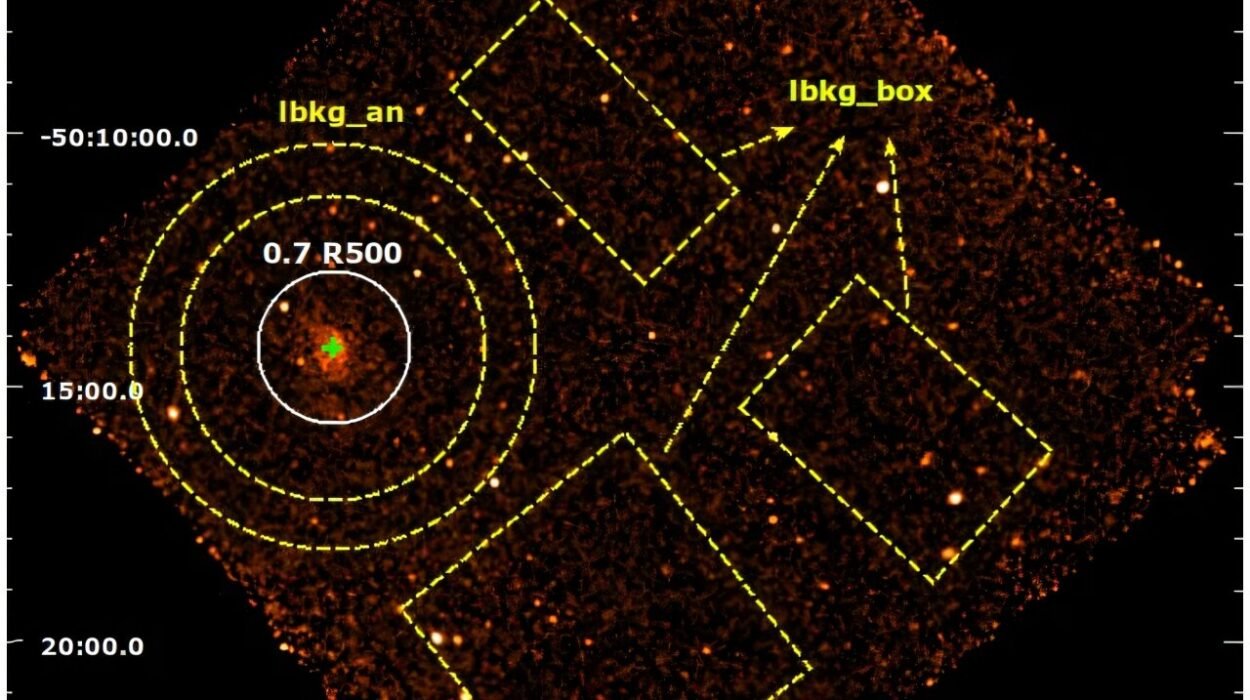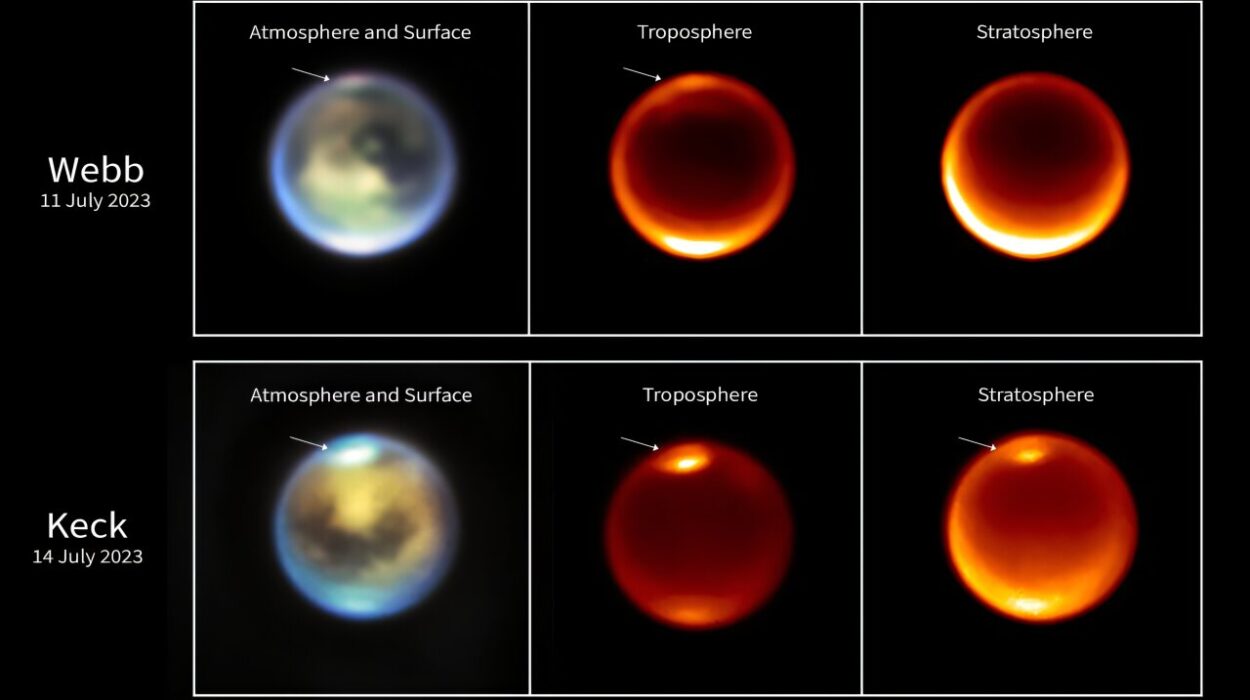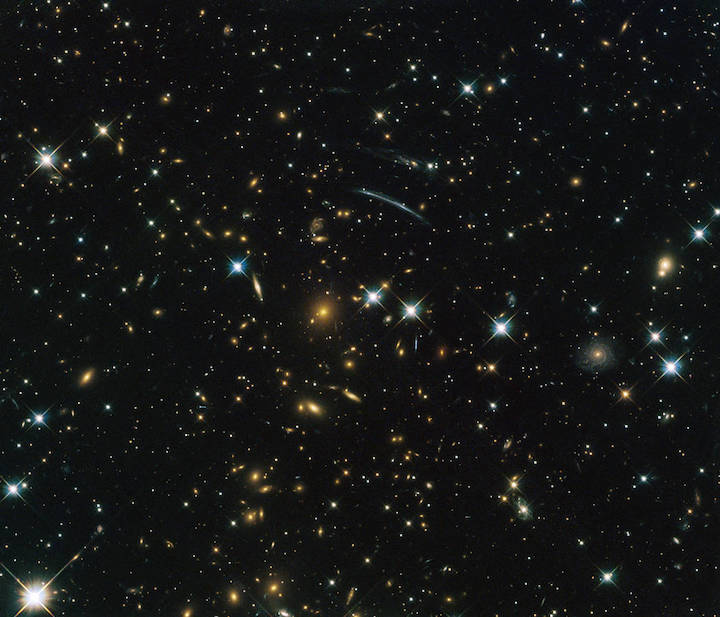For more than a century, the galaxy OJ 287 has puzzled astronomers. From 3.5 billion light-years away, it sends out flashes of light so intense they rival the brilliance of a trillion suns — and then fades back into darkness. These luminous bursts appear roughly twice every twelve years, a cosmic rhythm that has been faithfully repeating since the late 19th century. What could cause such staggering regularity in such a violent part of the universe?
Now, for the first time, scientists have the simulations and calculations to explain the mystery. In a new study published in The Astrophysical Journal Letters, researchers from the Canadian Institute for Theoretical Astrophysics (CITA), the Perimeter Institute, and Tsinghua University have recreated the OJ 287 system in unprecedented detail. Their work not only confirms long-standing theories but also gives humanity its most vivid look yet at what happens when two supermassive black holes dance toward destruction.
A Cosmic Collision Written in Light
Imagine a black hole so massive that it outweighs our Sun by eighteen billion times. Around it, a glowing disk of gas spirals inward, heating up as it falls toward the black hole’s invisible boundary — the event horizon. Now imagine a second, smaller black hole — still colossal, at 150 million solar masses — swooping in and crashing through that gas disk at incredible speed. The result? A flare so bright it can outshine entire galaxies.
This is the beating heart of OJ 287. For decades, astronomers suspected this scenario: a pair of titanic black holes locked in an orbit so extreme that their interactions unleash predictable bursts of light. Each time the smaller black hole plows through the gas surrounding its massive partner, the impact heats the material to extraordinary temperatures, producing the brief, brilliant flares seen from Earth.
These events have been carefully tracked since the 1880s, making OJ 287 one of the best-documented repeating phenomena in the sky. Yet until recently, the explanation rested largely on simplified models and “pen-and-paper” calculations. The new simulations by Sean Ressler and his colleagues have changed that.
Bringing a Distant Galaxy to Life
Sean Ressler, a postdoctoral researcher at CITA, led the study that has transformed how scientists visualize OJ 287. His team includes Luciano Combi, Bart Ripperda, and Xinyu Li — experts in computational astrophysics and magnetohydrodynamics. Together, they built the first-ever fully dynamic simulation of the OJ 287 system.
Their virtual recreation does not just show how the smaller black hole collides with the gas disk — it also reveals how that disk responds. The simulations model the churning of plasma, the twisting of magnetic fields, and the violent outflows of energy that follow each impact. For the first time, the team could watch how the system evolves in the aftermath of a collision — how shockwaves ripple through the gas, how new structures form, and how the system prepares for its next pulse of light.
“These simulations take into account the complicated interaction between extreme gravity, electrodynamics, and fluid dynamics,” explains Combi. “This is the first time the gas — the source of the light we see — has been simulated all together around the binary hole.”
The results are stunning, both scientifically and visually. The researchers have even transformed their data into animations that bring the system to life — not as an artist’s guess, but as a product of physical law. For the first time, humanity can watch something close to what actually happens inside a distant galaxy 3.5 billion light-years away.
The Power of a Binary Black Hole
OJ 287 is unique because it is the only galaxy where astronomers have clear evidence for a pair of supermassive black holes in such close, dynamic orbit. The smaller one takes about twelve Earth years to complete a circuit, and twice during that period, it smashes through the larger black hole’s accretion disk.
When it does, friction and compression release unimaginable amounts of energy. Gas heated to hundreds of millions of degrees radiates intensely across the electromagnetic spectrum — from visible light to X-rays. What we see from Earth is only a faint echo of the true violence unfolding there, yet even that echo is brighter than anything our Sun could produce.
The new study confirms that the collisions not only generate bursts of light but also physically reshape the disk itself. The impacts warp the disk, twisting it into spirals that gradually fall inward, feeding the central black hole and subtly altering its magnetic structure. These outbursts are not isolated explosions but part of a complex feedback system in which gravity, magnetism, and motion continuously influence one another.
Why OJ 287 Matters to Science
Beyond the spectacle, OJ 287 offers something profoundly valuable to astrophysics: a rare window into how galaxies grow and evolve. Almost every large galaxy in the universe — including our own Milky Way — harbors a supermassive black hole at its center. When galaxies collide, their central black holes eventually meet, spiral inward, and merge. This process releases enormous energy in the form of gravitational waves, ripples in spacetime itself.
Supermassive binary pairs like OJ 287 are the missing link in that story. They show astronomers how two black holes interact before merging, how their surrounding gas behaves, and how the merger influences the growth of the host galaxy. Yet such systems are incredibly difficult to observe. OJ 287 is not just a curiosity — it is the best real-world example we have of a process that shaped the structure of the cosmos.
“This is a step toward a fully coherent picture of the system,” says Ressler. “Simulations like these let us test whether our theoretical models can really explain the light we see.”
A Glimpse of the Future
The study’s implications go far beyond OJ 287 itself. By modeling how the smaller black hole disturbs the magnetic field and drives powerful outflows of gas, the researchers have created a framework that can be applied to other extreme systems. These insights will help astronomers interpret signals detected by next-generation observatories — both in light and in gravitational waves.
As instruments become more sensitive, scientists expect to detect gravitational waves from supermassive binaries like OJ 287. When that happens, simulations such as Ressler’s will become the bridge between what telescopes see and what space itself feels. The merger of such a pair would shake spacetime across billions of light-years, a cosmic heartbeat echoing through the universe.
From Mystery to Understanding
For decades, OJ 287 was a mystery that seemed almost mythic — a faraway lighthouse blinking across cosmic time, its message undeciphered. Today, it has become one of the best-understood laboratories for studying black holes and the forces that shape galaxies.
What makes this discovery powerful is not only the precision of the science but the story it tells about humanity’s reach. A century ago, OJ 287’s flashes were seen through telescopes and recorded on glass plates with no idea of their origin. Now, using equations that link gravity, magnetism, and fluid motion, scientists can simulate that distant system on supercomputers and watch the dance of invisible giants play out in virtual space.
The journey from mystery to understanding mirrors the larger story of physics and astronomy: the quest to turn awe into knowledge. Each new insight into OJ 287 brings us closer to answering one of the greatest questions of all — how the universe grows, evolves, and expresses its power through the most extreme objects it contains.
The light from OJ 287 began its journey toward Earth 3.5 billion years ago, long before life on our planet had taken complex form. Each flash we see today carries the signature of events that occurred when our world was still young, a reminder that even across unimaginable distances, the universe continues to speak to us in light.
And now, at last, we are beginning to understand what it is saying.
More information: Sean M. Ressler et al, Black Hole Collisions with Thin Accretion Disks: OJ 287 and Small Mass Ratio Supermassive Black Hole Binary Candidates, The Astrophysical Journal Letters (2025). DOI: 10.3847/2041-8213/ae11ab






